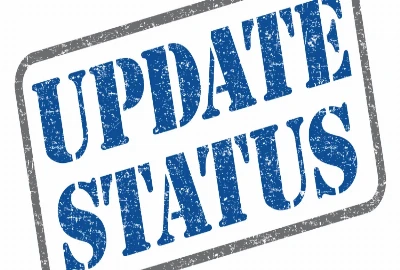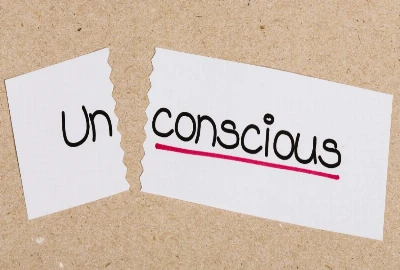Paranoia in Plain Text: Surveillance, Self-Censorship, and the Fear of Being Watched

In the modern digital world, every text, post, and search leaves a trace. Our words—once fleeting and private—now live indefinitely on servers, analyzed by algorithms and filtered through invisible systems of surveillance. The result? A subtle but profound shift in how we communicate. Many of us have begun to censor ourselves without realizing it, tailoring our speech to what we think is “safe.” This quiet, creeping fear—the sense of being constantly observed—isn’t paranoia anymore. It’s realism.
This blog unpacks how surveillance reshapes our behavior, why self-censorship has become second nature, and what we can do to reclaim authenticity in a world where even our thoughts feel monitored.
The Digital Panopticon: Living Under Constant Observation

The Modern Architecture of Surveillance
In the 18th century, philosopher Jeremy Bentham imagined the Panopticon—a prison designed so that one guard could watch all inmates without being seen. Today, that metaphor has become reality. Our smartphones, social media accounts, and smart devices serve as both tools and trackers. Every keystroke, search query, and emoji becomes data—an asset for corporations and governments alike.
How “Always-On” Monitoring Shapes Behavior
When people know they might be watched, they act differently. Online, that translates to cautious phrasing, deleting drafts, or avoiding controversial topics. This phenomenon, known as the chilling effect, suppresses free expression not through force, but through fear. We start to write not for connection, but for compliance.
The Invisible Audience
Unlike in-person surveillance, digital observation is silent. You rarely know who’s watching or when. Emails are scanned for marketing purposes, social feeds analyzed for sentiment, and even encrypted platforms collect metadata. The absence of visible watchers makes the fear more potent—turning digital life into a psychological cage built from pixels and paranoia.
The Psychology of Being Watched: From Awareness to Anxiety

The Cognitive Cost of Hyper-Awareness
Being aware that every word might be recorded rewires the mind. Studies show that perceived surveillance activates stress pathways, increasing cortisol levels and reducing creativity. In constant “performance mode,” people edit themselves even in private messages, second-guessing harmless jokes or opinions. The result? A generation fluent in self-censorship.
Social Media as the New Stage
Platforms like X (formerly Twitter), Instagram, and TikTok blur the line between personal and public. We perform authenticity under the gaze of followers, brands, and bots alike. Every post becomes a digital performance, curated for approval yet haunted by potential backlash. Even moments meant to be genuine are filtered through the fear of being misread—or misused.
The Erosion of Digital Intimacy
Paranoia doesn’t just change what we post—it changes how we relate. Private conversations shift from candid to cautious, as people avoid sharing sensitive topics over text or voice notes. This erosion of trust reshapes intimacy itself. When fear infiltrates communication, vulnerability becomes rare, and connection becomes transactional.
Censorship Without Censors: How Self-Surveillance Takes Over

The Internalized Watcher
The most effective form of control doesn’t come from outside—it comes from within. Over time, we internalize the gaze of authority, editing our words automatically. This “inner censor” becomes a constant companion, guiding what we say, how we say it, and what we choose to leave unsaid.
Algorithmic Policing and Shadowbans
Platforms often justify moderation as protection, but their algorithms also shape what’s acceptable to express. Words flagged as “sensitive” or “controversial” may reduce your post’s visibility. Creators quickly learn what language performs well—and what gets punished. Thus, self-censorship becomes an adaptive survival strategy in a system that rewards conformity.
The Language of Compliance
Even our vocabulary has changed. People use euphemisms, coded language, or memes to discuss restricted topics. What seems like creativity is often a coping mechanism—a way to speak under digital scrutiny. This normalization of linguistic restraint turns conversation into a careful dance of implication rather than expression.
Surveillance Capitalism: When Attention Becomes Data

Your Data, Their Profit
The driving force behind online surveillance isn’t just political—it’s economic. Every click, scroll, and pause is tracked to feed a trillion-dollar industry known as surveillance capitalism. Corporations don’t just observe behavior; they predict and influence it. The more data they collect, the more accurately they can manipulate attention, preferences, and purchases.
Personalization as Control
Personalized ads and recommendations appear harmless, even helpful. But behind them lies a mechanism of behavioral prediction. When you’re constantly nudged toward specific content, you lose autonomy over your attention. What feels like choice is often algorithmic steering.
The Psychological Toll of Being a Product
When users realize they’re the product, not the customer, it breeds existential unease. People begin to view themselves as data points rather than individuals. This dehumanization fuels anxiety, distrust, and a deep-seated paranoia—because being watched no longer means protection, but profit extraction.
The Politics of Fear: Surveillance as Social Control

The Normalization of Monitoring
Governments justify mass surveillance as a matter of national security, but its reach extends far beyond. From traffic cameras to facial recognition, surveillance has become infrastructural—so embedded we barely notice it. The normalization of being watched makes resistance seem futile, which is precisely how control solidifies.
Social Sorting and Predictive Policing
Data isn’t neutral. It’s used to categorize, profile, and predict. Predictive policing technologies and social credit systems use digital footprints to assess “risk” or “trustworthiness.” The implications are chilling: our online behavior can determine real-world access—to jobs, loans, or travel.
The Culture of Compliance
Once people believe they’re always observed, they start to police themselves and others. This creates a culture of conformity where dissent feels dangerous. The fear of being flagged or misunderstood discourages activism, satire, or even humor. In this climate, silence becomes safer than speech.
Breaking the Surveillance Spell: Toward Digital Autonomy

Digital Literacy as Resistance
Awareness is the first act of rebellion. Understanding how surveillance systems operate—what data they collect and how it’s used—empowers users to make informed choices. Tools like privacy browsers, end-to-end encryption, and decentralized platforms are modern shields against constant observation.
Reclaiming Authenticity
Authenticity online begins with courage—the willingness to express without fear. That doesn’t mean oversharing, but choosing honesty over performance. Building smaller, trusted digital communities can restore intimacy and trust, creating spaces where vulnerability feels safe again.
Reimagining a Private Future
Privacy isn’t nostalgia—it’s necessary. Advocating for stronger digital rights, data protection laws, and ethical tech design is essential for rebuilding trust in digital spaces. The future of online communication shouldn’t be one of constant anxiety but one of agency and choice. True freedom begins when the gaze no longer defines us.




